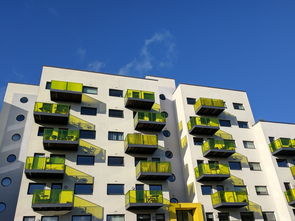Exploring the Magnificence of Chinese Iconic Architecture: A Journey Through Time and Tradition
As a contemporary architect, I have had the privilege to witness and contribute to the evolution of architectural landscapes, but none have held a deeper fascination than the rich tapestry of Chinese buildings that span centuries. From ancient temples to modern skyscrapers, these structures embody not only aesthetic prowess but also profound cultural significance. Here, we delve into some of China's most renowned buildings, each one a testament to its time, history, and architectural brilliance.
1、The Great Wall of China: This UNESCO World Heritage site, stretching over 13,000 miles, is a global architectural wonder. Not just a defense mechanism, it's a remarkable engineering feat, showcasing the ingenuity of the Chinese people. Its grandeur and durability make it an iconic symbol of China's historical might.
2、The Forbidden City: Located in Beijing, this imperial palace complex, once home to the Ming and Qing dynasties, is a living embodiment of traditional Chinese architecture at its zenith. The intricate layout, exquisite decorations, and harmonious use of color and space are a testament to the fusion of aesthetics and practicality.
3、Terracotta Army: Although not strictly a building, the Terracotta Warriors in Xi'an bear architectural relevance in their massive scale and precision. These life-sized clay figures reflect the advanced artistic and technical skills of the Qin Dynasty, revealing the pinnacle of Chinese art and engineering.
4、The Temple of Heaven: This stunning temple complex, designed to appease the heavens, showcases the principles of feng shui. Its circular structure, grand hall, and elaborate decorations embody the harmony between nature and man, a fundamental principle in Chinese architecture.
5、The Bund: In Shanghai, the Bund's neoclassical buildings, once the financial center of the country, contrast with the futuristic skyline behind. They illustrate the city's evolution from a colonial hub to a global economic powerhouse, reflecting the dynamic spirit of China.
6、The Potala Palace: Located in Lhasa, the spiritual heart of Tibet, the Potala Palace is a masterpiece of Tibetan architecture, blending Buddhist and traditional Chinese elements. Its grandeur and religious significance symbolize the fusion of architecture, faith, and cultural identity.
7、The Three Gorges Dam: While not a traditional building, the dam on the Yangtze River is a colossal engineering marvel. It not only provides hydroelectric power but also represents the nation's ability to tackle grand challenges and transform infrastructure.
9、The National Museum of China: This modern building, located in Beijing, showcases the country's rich history and culture in a contemporary setting. Its sleek design seamlessly integrates with the surrounding historic architecture, symbolizing China's embrace of both old and new.
10、The CCTV Headquarters: Designed by I.M. Pei, this iconic skyscraper in Beijing represents the fusion of Chinese aesthetics with modern technology. Its distinctive design, incorporating traditional motifs with a minimalist approach, has become a symbol of China's architectural innovation.
Each of these buildings, like a piece in a grand symphony, tells a story of China's past, present, and future. They inspire architects like myself to push boundaries while respecting and preserving the cultural heritage that forms the very essence of our architectural heritage. As a master in my field, it is my responsibility to carry forward this legacy and create structures that resonate with the evolving needs of our society while paying homage to the architectural treasures that came before.











